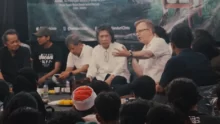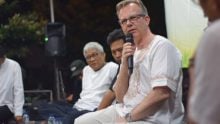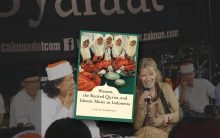Lumajang: In the Shadow of Semeru, Between the Sacred and the Human

It was an enormous pleasure and a privilege to accompany Mbah Nun and friends to Lumajang on the evening of Thursday 6 April. The region’s soil, enriched by the volcanic eruptions of fiery Mount Semeru, affords a plentiful array of fruit and vegetables and these were among the selections that made up the fast-breaking table, as Maghrib was soon upon us.
I was especially happy to join this trip as I’d never been to Lumajang before. It was unlike any other maiyah gathering I’d attended. I told the assembled jamaah that maiyah in Lumajang had a distinctive character which set it apart from Kenduri Cinta in Jakarta, Mocopat Syafaat in Yogyakarta, Gambang Syafaat in Semarang and PadhangmBulan in Jombang; this was different.
Mbah Nun had stated that the concept of maiyah is something organic, a phenomenon that occurs at the human level and which arises from within us as human beings and in our reaction to something that has certain qualities:
Something that is true
Something that is beautiful
Something that is sacred
And something that demands authenticity in our response, in our intent and in our commitment.
In essence, by way of our recognition and cultivation of these qualities, maiyah teaches us how to be human.
To step on the path to becoming human we don’t need money, we don’t need permission, we don’t need a ticket – it’s sufficient just to be there. And we only need to bring one thing; one element from within ourselves and which we are ready to receive, and that’s love; true, beautiful, sacred and authentic, love. And that is maiyah.
We come in truth.
We come for beauty.
We come to encounter the sacred state and we come with authenticity through our faith in Allah, the Holy Quran and the Prophet Muhammad (saw).
Kenduri Cinta is a regular maiyah gathering held monthly in Jakarta that I have attended and witnessed over many years. Its jamaah stem largely from the urban environments of the nation’s capital but just as those in Yogyakarta, Semarang, Jombang or Lumajang, they sense a call to join. That’s an organic call and one that is in step with our experience of the rhythms of our human lives. The rhythm of the moon at PadhangmBulan, the rhythm of the seasons, the rhythm of planting and harvest, even the rhythm of the volcanic mountains over years and centuries, the rhythms of the trees, plants and animals and the inescapable rhythms of nature and our human lives.
Because maiyah is something that originates from, and resides in, the human heart of each one of us.

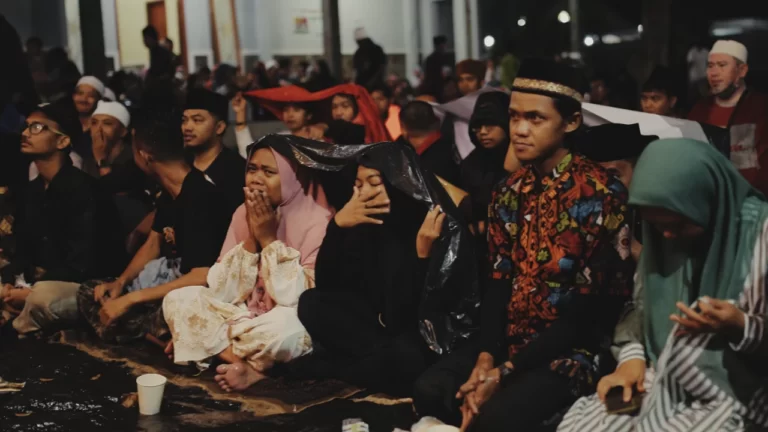
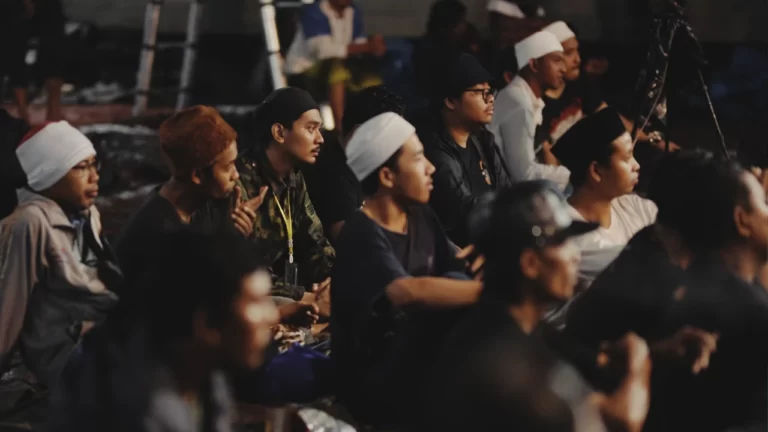
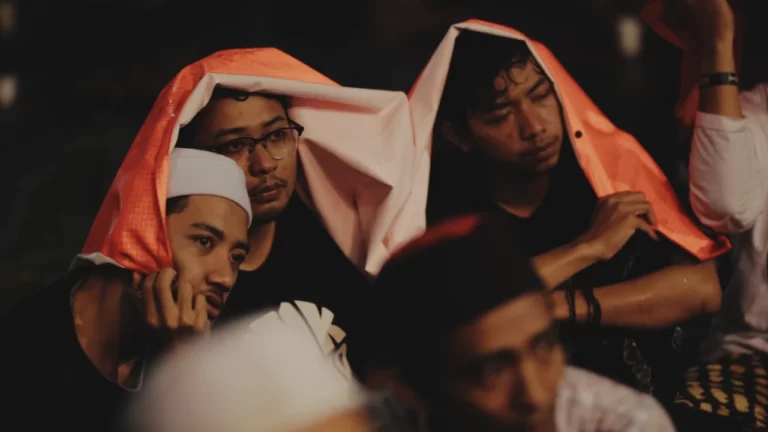


Hundreds of jamaah wait patiently, crowd eagerly and queue to greet Mbah Nun and to receive his touch, embrace or prayer at every maiyah gathering. That is the point at which the organic meets the sacred; sacred in the sense of the spiritual heart of Mbah Nun and the strength of the jamaah in their faith…whatever faith.
We believe that in maiyah we encounter the sacred in the joy and laughter of those who join, and we feel a sense of loss if we are unable to join for a month. That is a human reaction, not dependent on anything material, or “digital”, but dependent instead on the true, the beautiful, the sacred and the authentic.
To be human is to be imperfect, to be broken, but that does not mean that we cannot contain a spark of the sacred, just as the Hallelujah in Leonard Cohen’s famous song is both sacred and “broken”. At maiyah gatherings “being human” is set in the context of the interpretation of the Holy Quran and in the example given in the life and lessons of the Prophet Muhammad (saw). No maiyah gathering is ever the same. At each gathering the theme, materials, and teachings are always different. But the wirid and gamelan we heard in Lumajang that evening were the most dynamic and moving I’d heard anywhere outside of KiaiKanjeng themselves. Thank you for that.
Overseas it’s often a different story, for the Indonesian diaspora, for the jamaah maiyah who may be there and for the wider populations of those countries. Many in those lands struggle to accommodate “faith” in the face of “modernity” and it can be difficult to identify where those qualities of truth, beauty, the sacred and the authentic may be found.
In those circumstances Mbah Nun and KiaiKanjeng have shown the way in their travels over the years, visiting communities in many countries including the Netherlands and the UK, Germany and Finland, Australia and Malaysia, South Korea and Hong Kong. You have heard the stories of those journeys and the things that have been achieved and I will tell those stories again but in those travels they have shown the way for jamaah maiyah and for communities that are in difficulty or conflict, for communities that are marginalised and for those that are suffering persecution. They do it with a hopeful, healing embrace, they do it with discourse and compassion, and they do it with love.
In looking out over the assembled jamaah that evening, just as Semeru looks out over Lumajang, I saw tears, smiles and laughter, joy and happiness at being together, learning together. In rain or shine, from the time we’re born, throughout our lives on earth and until we die, that is maiyah.
Thank you.

